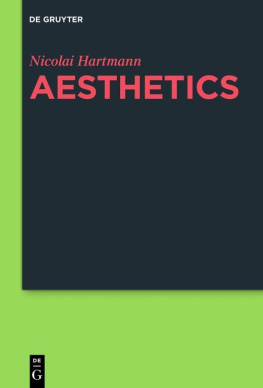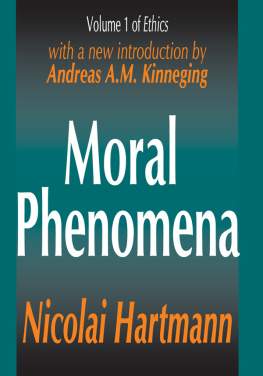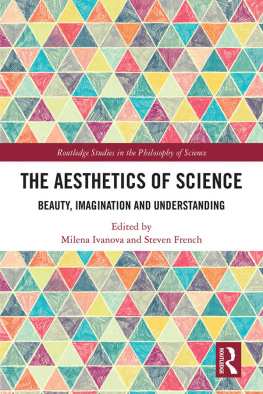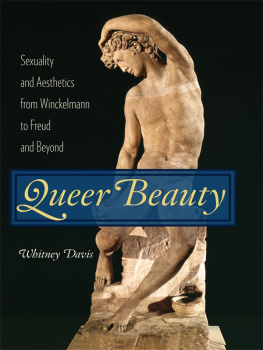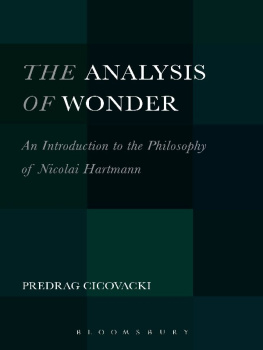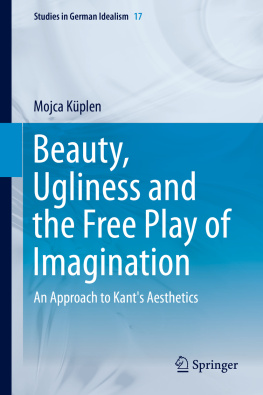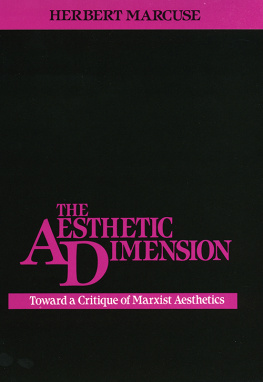a) The strata of the aesthetic object and ontic strata
Why art is not imitation was discussed above. Not all art is even representation. There is, however, an inner homogeneity between representational and non-representational art it extends all the way into ornamental art, in the free play with form, which is not in any way similar to any given forms. And yet all art remains close to what is real. Indeed, if it separates itself from reality, it is untrue to life.
Why does art stay so close to life, to being? Why is this true not only for literature and painting, but also for music and architecture? Because existent things are reflected in all art. All art must lay a claim to the true-to-life. That means it has a tendency to see as we see in life, through the external appearance, concretely, intuitively, in part also veiled and hidden by the appearance. That is even true of music and architecture; with them, the relation is concealed only by the specific matter upon which it bestows form. It is most visible in the representational arts. But how do they represent?
That turned out to be quite clear: they represent by means of the appearance-relation, and this relation is then in turn active in the series of strata; it goes on from stratum to stratum (Cf. Chaps. 1115). So far the structure of the object remained constant. But there is still another question to be posed: how is it with these strata, how does the aesthetic object come to them? Why is the appearance-relation active precisely in them?
The answer to this question cannot be given via another description of these strata, as has been done here earlier. Nor it is a question of the foundations: how are these strata in the aesthetic object which after all, repeat themselves in a certain analogous way in the various domains of art related to the universal ontic strata of the real world?
On the one hand, they remind us specifically of the ontic strata, but on the other hand there are more of them, and the importance does not lie as much upon there being a great distance between the strata, but rather in part upon much shorter leaps. The question is perhaps (458) without importance for aesthetics. But it is of great interest for ontology. For here we have the opportunity to test out the import of the stratification of being.
This must now be stated clearly: at bottom, in the aesthetic object, the same ontic strata exist that make up the constitution of the real world. Briefly and simply, there are four: Thing (sensible) Life Soul World of Spirit; but each one can be broken down further, and broken down in fact very differently in the different arts.
Thus, in painting, for example, the lowest ontic stratum is already broken down into 1) the two-dimensional surface of the picture, with its flecks of color; 2) the three-dimensional spatial field with its apparent space and apparent light; and 3) the appearance of motion in the figures; the apparent animation of the figures begins only with a fourth stratum. In painting, specifically, the outer strata are the most important. Only behind them begin the elements corresponding to the higher ontological strata: that of the psychic realm, of human character, the stage setting, etc.
It is informative to contrast here something quite different, i.e., the art of literature in its larger formats: drama, the epic, and the novel. Here too, we have the same series of strata as in the existing things upon which they are based, but the way they are divided up is different, and their relative importance is differently distributed.
The stratum of sensible objects is represented by nothing more than language (speech, writing); likewise, the stratum upon which animation appears is represented only by that of motion and gesture (apparent or real by means of the actor ). The psychic stratum lies in character and response; the spiritual stratum can be broadly analyzed as follows: 1) situation and plot, 2) destiny, 3) ideal personality, 4) universal idea. There is a peculiar feature here: a partial stratum of the spiritual is prior even to the psychic (it is a foreground element in relation to the latter). That may lie in the human way of seeing; for the beholder, the situation and action are more immediately apparent than are the elements of character.
It is again different in music. In the external strata, we arrive quickly at the limit to which sounds can be heard together as unities; beyond that limit larger musical unities are superimposed upon each other, and, as such, they are not given to the senses. Yet behind these a further series of strata appears, but of a different kind. Among them the psychic has by far the preponderance; but the stratum of animation is also not lacking there, similarly not that of the spiritual, which again can be analyzed further.
Here in the inner strata, the ontic series of strata is easy to rediscover. In the outer strata, that is not so easy. For the latter, the reason is that form is bestowed upon quite different matter and without any claim to representation. Mutatis mutandis, the same is true for architecture, where heterogeneity is still rather coarse.
The general ontological strata of the world are not everywhere so easily recognizable as in literature, but on the whole they can be identified. The foreground strata are the most vacillating and irregular (459); these stand so strongly under the law of aesthetical matter that the basic ontic law of the strata disappears behind their uniqueness.
One may ask: why, at bottom, must the ontic strata of the real recur in the strata of the work of art? The answer is because the represented objects all contain the same ontic series of strata expressed more correctly: in so far as they stretch upward into the higher strata, yet retain the lower ones (following the law that the lower strata are the ones that bear, the higher the ones that are borne). In the representational arts, almost every material extends into the human sphere; and since man has all four strata in himself, those must therefore reappear in the representation of the human.
It is therefore very important that an artist does not omit any stratum. If he does, he will immediately become abstract and conceptual, lacking in vividness like the poet who psychologizes instead of letting his characters speak and act, and in that way reveal themselves. We see, hear, and experience in life the soul and spirit about us in no other way than by the mediation of the psychical-psychic, existential stratum, on which alone we are bound directly by our senses, and, as in life everything else is already given mediately, so too in art. Art takes advantage of these facts. That is the ontic sense of the appearance-relation.
b) Convergence of all great art
Now the general order of things in this context is, in general, that the ontically higher strata lie concealed deeper down in the interior of the work of art and appear only through the transparency of the outer strata. That has an ontic basis: the arts direct themselves towards the senses, but the senses are tied to the physical, and can allow further matters to be grasped only by their mediation. This point of departure cannot be shifted or exchanged. For the fact is that the senses directly communicate nothing that is psychical or living, absolutely nothing but the material world that which belongs to the broad area of the physical. For that reason, the ontically higher strata must be the aesthetically deeper ones. Then, too, nothing can be traded away from this relationship. It is valid, with only slight alterations, for all regions of the arts. And that is also true for human and natural beauty.

